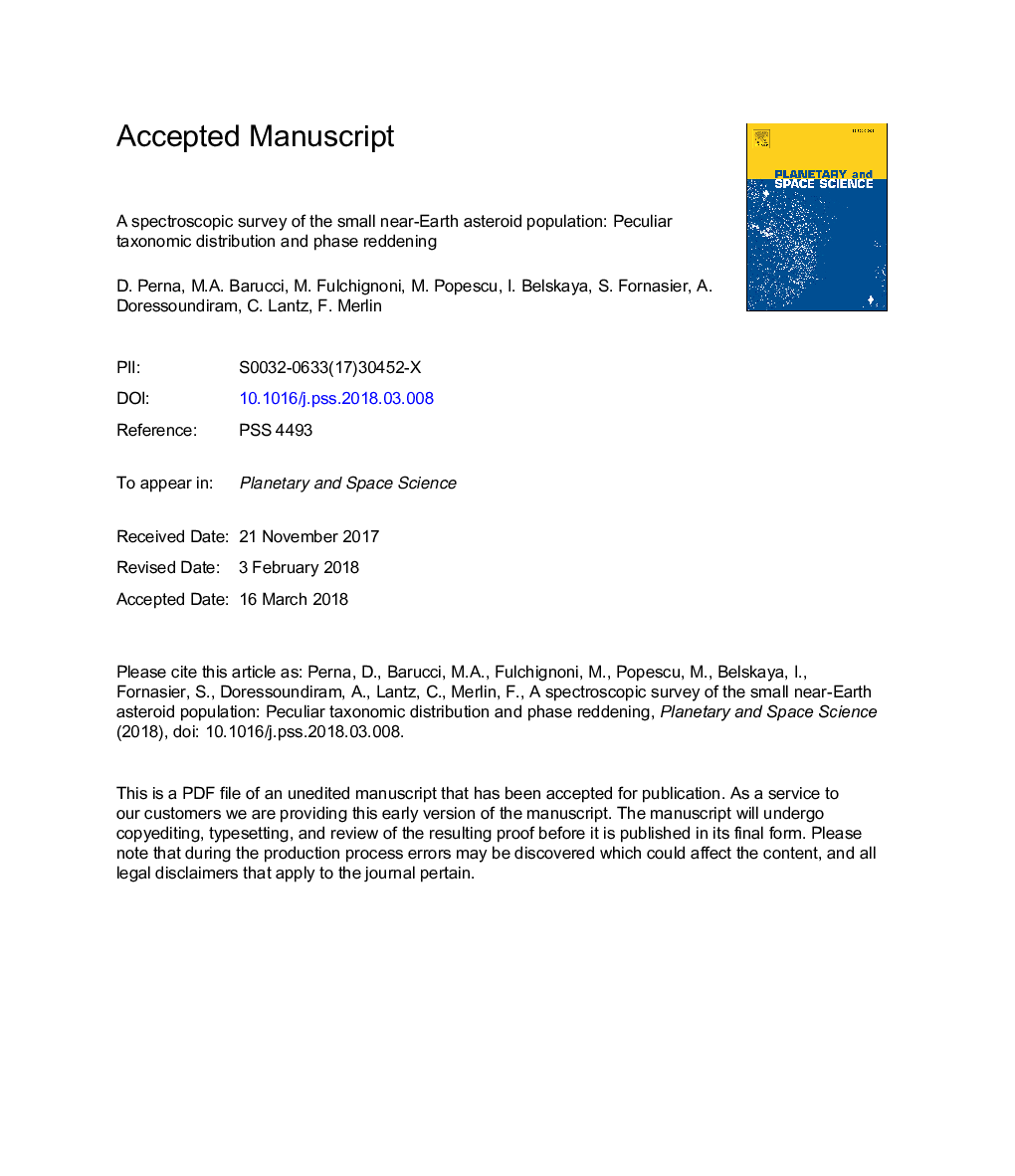| Article ID | Journal | Published Year | Pages | File Type |
|---|---|---|---|---|
| 8142145 | Planetary and Space Science | 2018 | 24 Pages |
Abstract
We present the results of the first-ever visible spectroscopic survey fully dedicated to the small (absolute magnitude Hâ¯â¥â¯20) near-Earth asteroid (NEA) population. Observations have been performed at the New Technology Telescope (NTT) of the European Southern Observatory (ESO), during a 30-night Guaranteed Time Observations programme, in the framework of the European Commission financed NEOShield-2 project. The visible spectra of 147 objects have been obtained and taxonomically classified. They show a peculiar taxonomic distribution, with respect to larger NEAs. In particular, olivine-rich A-types and organic-rich D-types are more abundant than what could be expected by extrapolating the taxonomic distribution of larger NEAs. Such results have implications for the investigation of the first phases of solar system history, including the delivery of prebiotic material on the early Earth. Having been obtained over a large range of solar phase angles, our data allowed us to evidence peculiar phase reddening behaviours for asteroids belonging to different taxonomic types. Low-albedo asteroids display no or limited phase reddening, compared to moderate- and high-albedo objects. This result suggests a promising novel way to distinguish primitive asteroids in the X-complex. In agreement with previous laboratory experiments, olivine-rich surfaces are the most affected by phase reddening.
Related Topics
Physical Sciences and Engineering
Earth and Planetary Sciences
Geophysics
Authors
D. Perna, M.A. Barucci, M. Fulchignoni, M. Popescu, I. Belskaya, S. Fornasier, A. Doressoundiram, C. Lantz, F. Merlin,
